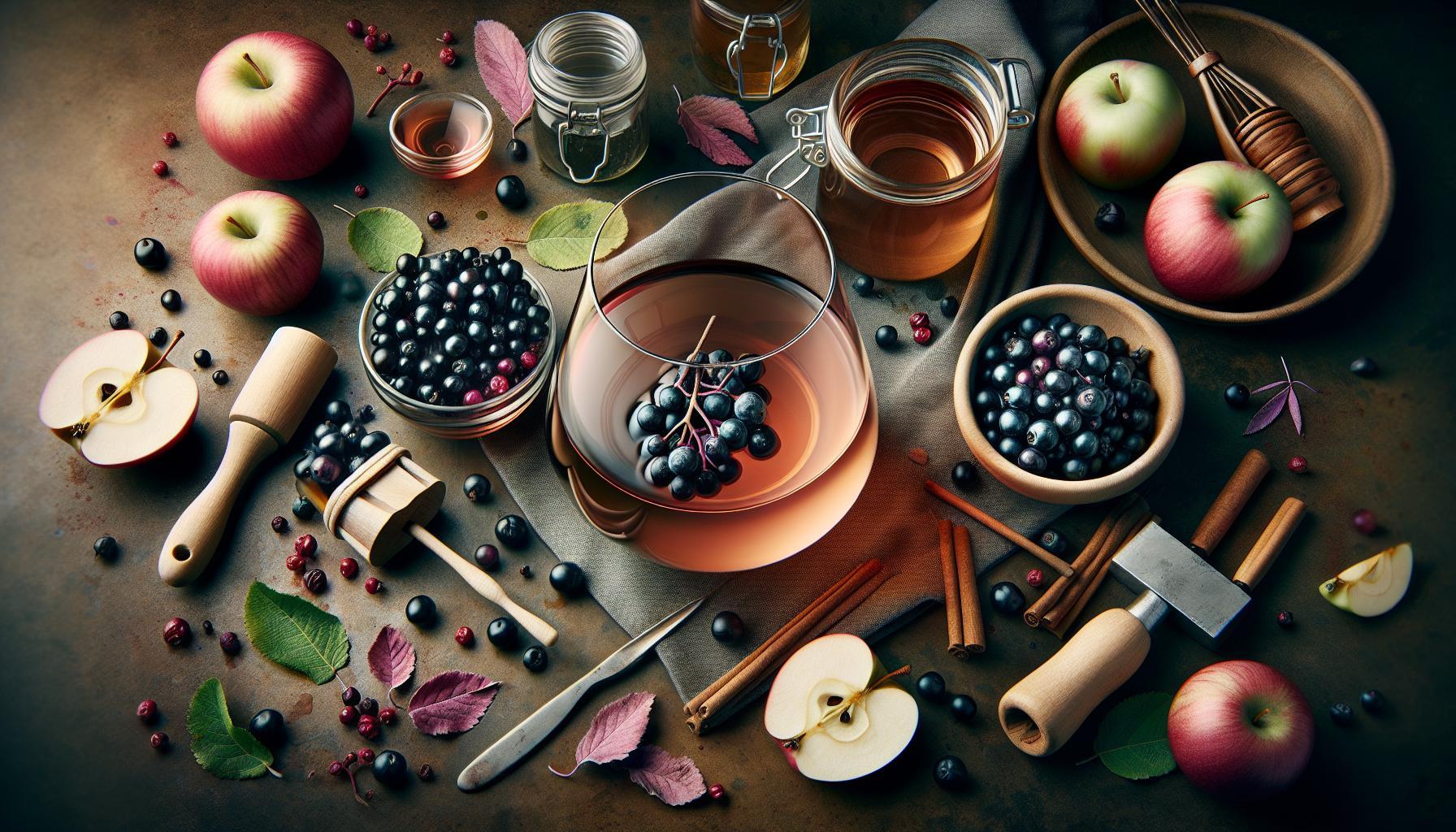The lure of luscious, fragrant elderberries blending with the crisp tanginess of fresh apples, all steeped in a deep and elegant wine, are enough to make anyone’s tastebuds dance. My dear readers, we’re going on a marvelous culinary journey today as we dive into the delights of an “apple and elderberry wine recipe”. Intriguing yet royal in its simplicity, this recipe is for those adventurous souls who appreciate the delicate balance of taste, aromas, and health benefits blended into a heady concoction of liquid delight.
Ingredients List
For our fantastic voyage into the realm of homemade wine, we have the following ingredients at the ready:
– 4kg Apples (cut into quarters, any variety)
– 1kg Elderberries (freshly picked, stemmed)
– 2kg White sugar
– 3 Liters of water
– 1 pack Wine yeast
– Yeast nutrient and pectic enzyme (as per the packet instructions)
Instructions
1. First, thoroughly rinse the apples and elderberries. After ensuring they’re clean, quarter your apples and carefully remove the stems from your elderberries.
2. Combine the apples, elderberries, and water in a large pot and bring to a simmer. Allow this mixture to cook until the fruits break down, approximately 45-60 minutes.
3. Next, strain the mixture into a fermentation bucket, making sure to squish the fruits for maximum extraction.
4. Now, mix in the sugar, ensuring it’s completely dissolved. Allow the mixture to cool to room temperature.
5. Sprinkle the yeast, yeast nutrient, and pectic enzyme over the mixture, stirring well.
6. Covered, let your wine-to-be to ferment in a cool, dark place for at least 1 week, stirring daily.
7. After a week, strain it into a demijohn using a funnel and allow it to continue fermenting for around 3 months.
8. Once the wine has cleared, it’s time for the final step: bottling. Siphon the wine into clean bottles, cork them, and store them upright.
9. Patience is key here! For the best taste, allow the apple and elderberry wine to age for at least one year.
Cooking Time and Servings
This recipe requires between 1-2 hours of prep time and at least 1 year to ferment for best taste. This recipe will produce about 8 to 10 bottles of wine, perfect for sharing with friends and family or storing for special occasions.
Nutritional Information
Though typically enjoyed for taste and occasion rather than nutritional benefits, our apple and elderberry wine brings its share of perks. Elderberries are renowned for their powerful antioxidants and immune-boosting properties. Meanwhile, apples chime in with their rich source of dietary fiber and essential vitamins. Always remember to enjoy alcoholic beverages, including homemade wine, in moderation as part of a balanced diet.
Tips and Tricks
– It’s essential to be patient when making wine. Try not to rush the fermentation and aging process for the best taste.
– Ensure all your equipment is clean and sanitized to avoid any unwanted flavors.
– If you want a sweeter wine, you can add more sugar, but do so sparingly.
In Conclusion…
As we conclude this culinary adventure, let’s relish the joy of creating something exquisite like the apple and elderberry wine. Homemade drinks always carry a personal touch and sense of accomplishment. So go ahead, try this out, and when you do, share your experience, thoughts, and maybe a picture or two of your creation. After all, taste is best enjoyed when shared.
Frequently Asked Questions
1. Can I use store-bought juice instead of fresh fruit? Yes, but using fresh fruits gives the wine a richer flavor.
2. Can I speed up the aging process? Unfortunately, no. Time is a crucial ingredient in winemaking.
3. Can I use a different type of sugar? Yes, you can experiment with brown sugar or honey.
4. Does the type of apple used affect the flavor? Yes, different apple varieties will provide different taste profiles.
5. What equipment do I need? You’ll need a large pot, fermentation bucket, demijohn, funnel, and bottles.
Remember, making wine is like weaving a story – the pleasure is in the process as much as the ending. So, without further ado, let’s get brewing!


